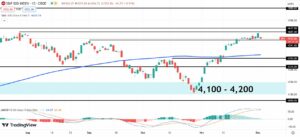
- Gold price eases some gains but remain in the bullish trajectory as Fed’s rate-cut bets persist.
- This week, the US NFP and ISM PMI reports will guide further action in the FX domain.
- The US Dollar advances further ahead of crucial economic data.
Gold price (XAU/USD) kicks-off the 2024 year on a promising note, demonstrating a firm-footing on Tuesday amid prospects of a reduction in interest rates by the Federal Reserve (Fed) starting in March. Factors that are boosting rate-cut hopes are significant progress in the underlying inflation declining towards 2% and easing labour market conditions due to restrictive monetary policy stance. The precious metal faces marginal sell-off as the US Dollar has advanced further. The USD Index has refreshed weekly high to near 102.00 and 10-year US TReasury yields have climbed to near 3.96%.
This week, investors should brace for sheer volatility as various economic indicators are lined-up for release. The ISM manufacturing PMI, JOLTS Job Openings data and Federal Open Market Committee (FOMC) minutes of December monetary policy meeting will be followed by Services PMI and the Nonfarm Payrolls (NFP) report. Market participants are unlikely to change broader bearish stance for the US Dollar and Treasury yields amid deepening rate-cut expectations by the Fed.
Daily Digest Market Movers: Gold price drops as US Dollar prints a fresh weekly high
- Gold price faces nominal sell-off near $2,075 amid further recovery in the US Dollar.
- The broader prospects are still upbeat on higher likelihood of early rate cuts by the Federal Reserve in 2024.
- As per the CME FedWatch tool, there is a 72% chance that the Fed will reduce interest rates by 25 basis points (bps) to 5.00-5.25%. The probability that the Fed will continue reducing rates in May is similar at 72%.
- The appeal for the Gold price has strengthened after Federal Reserve Chairman Jerome Powell changed his tone at the December monetary policy meeting from one that backs higher for longer interest rates to one that sees rate cuts being a topic for discussions going forward.
- However, Jerome Powell warned that the achievement of price stability is the Fed’s foremost objective.
- Investors should be prepared for volatile price action as the labour market, Manufacturing and Services PMI data are due this week. In addition to that, investors will focus on the FOMC minutes, which are set to be released on Wednesday.
- As per the estimates, the Institute of Supply Management (ISM) is expected to report Manufacturing PMI for October at 47.1, higher than the former reading of 46.7.
- A figure below the 50.0 threshold is considered a contraction in economic activity and this would be the 14th straight contraction in the US factory data.
- The US Bureau of Labor Statistics is scheduled to report JOLTS Job Openings data for November, which will also be released on Wednesday. Jobs posted by US employers were 8.850M, higher than the prior demand of 8.733M.
- A major focus for investors will be the FOMC minutes. The FOMC minutes will provide a detailed explanation behind keeping interest rates unchanged in the range of 5.25-5.50% for the third time in a row. Apart from that, investors will be focused on guidance for interest rates in 2024 and detailed projections for inflation and labour market conditions.
- Meanwhile, the US Dollar Index (DXY) has advanced to near 102.00 on Tuesday. In 2023, the USD Index ended its winning streak since 2020 on firmer rate-cut bets.
- This week, action in the USD Index will be guided by the labour market data, which is scheduled for Friday. But before that, market participants will focus on the US Automatic Data Processing (ADP) private payrolls data, which will be published on Thursday.
- As per the consensus, US private employers are expected to have hired 113K job-seekers in December, against hiring of 103K individuals in November.
Technical Analysis: Gold price falls below $2,070
Gold price climbs above Friday’s high, supported by expectations of early rate cuts by the Fed. The precious metal surrenders some gains amid decent recovery in the US Dollar. The precious metal is expected to extend further towards the previous week’s high near $2,090. The broader appeal for the Gold price is extremely bullish as short-to-long term Exponential Moving Averages (EMAs) are sloping higher.
Meanwhile, momentum oscillators have shifted into the bullish trajectory, indicating more upside ahead.
Central banks FAQs
Central Banks have a key mandate which is making sure that there is price stability in a country or region. Economies are constantly facing inflation or deflation when prices for certain goods and services are fluctuating. Constant rising prices for the same goods means inflation, constant lowered prices for the same goods means deflation. It is the task of the central bank to keep the demand in line by tweaking its policy rate. For the biggest central banks like the US Federal Reserve (Fed), the European Central Bank (ECB) or the Bank of England (BoE), the mandate is to keep inflation close to 2%.
A central bank has one important tool at its disposal to get inflation higher or lower, and that is by tweaking its benchmark policy rate, commonly known as interest rate. On pre-communicated moments, the central bank will issue a statement with its policy rate and provide additional reasoning on why it is either remaining or changing (cutting or hiking) it. Local banks will adjust their savings and lending rates accordingly, which in turn will make it either harder or easier for people to earn on their savings or for companies to take out loans and make investments in their businesses. When the central bank hikes interest rates substantially, this is called monetary tightening. When it is cutting its benchmark rate, it is called monetary easing.
A central bank is often politically independent. Members of the central bank policy board are passing through a series of panels and hearings before being appointed to a policy board seat. Each member in that board often has a certain conviction on how the central bank should control inflation and the subsequent monetary policy. Members that want a very loose monetary policy, with low rates and cheap lending, to boost the economy substantially while being content to see inflation slightly above 2%, are called ‘doves’. Members that rather want to see higher rates to reward savings and want to keep a lit on inflation at all time are called ‘hawks’ and will not rest until inflation is at or just below 2%.
Normally, there is a chairman or president who leads each meeting, needs to create a consensus between the hawks or doves and has his or her final say when it would come down to a vote split to avoid a 50-50 tie on whether the current policy should be adjusted. The chairman will deliver speeches which often can be followed live, where the current monetary stance and outlook is being communicated. A central bank will try to push forward its monetary policy without triggering violent swings in rates, equities, or its currency. All members of the central bank will channel their stance toward the markets in advance of a policy meeting event. A few days before a policy meeting takes place until the new policy has been communicated, members are forbidden to talk publicly. This is called the blackout period.
- SEO Powered Content & PR Distribution. Get Amplified Today.
- PlatoData.Network Vertical Generative Ai. Empower Yourself. Access Here.
- PlatoAiStream. Web3 Intelligence. Knowledge Amplified. Access Here.
- PlatoESG. Carbon, CleanTech, Energy, Environment, Solar, Waste Management. Access Here.
- PlatoHealth. Biotech and Clinical Trials Intelligence. Access Here.
- Source: https://www.fxstreet.com/news/gold-price-advances-on-persistently-high-rate-cut-bets-202401020940
- :has
- :is
- :not
- :where
- 1
- 102
- 2%
- 2020
- 2023
- 2024
- 25
- 33
- 36
- 46
- 50
- 7
- 8
- a
- above
- accordingly
- achievement
- Action
- activity
- addition
- Additional
- adjust
- Adjusted
- adp
- advance
- advanced
- advances
- After
- against
- ahead
- All
- also
- Amid
- analysis
- and
- Animate
- apart
- appeal
- appointed
- ARE
- AS
- At
- Automatic
- avoid
- backs
- Bank
- Bank of England
- Bank of England (BOE)
- Banks
- basis
- BE
- bearish
- been
- before
- behind
- being
- below
- Benchmark
- Benchmark Rate
- Bets
- between
- Biggest
- board
- BoE
- boost
- boosting
- broader
- Bullish
- Bureau
- bureau of labor statistics
- businesses
- but
- by
- called
- CAN
- central
- Central Bank
- Central Banks
- certain
- chairman
- Chance
- change
- changed
- changing
- Channel
- cheap
- Climbed
- Close
- CME
- come
- committee
- commonly
- communicated
- Companies
- conditions
- Consensus
- considered
- constant
- constantly
- content
- continue
- contraction
- control
- control inflation
- conviction
- country
- create
- crucial
- Currency
- Current
- cuts
- cutting
- data
- data processing
- Days
- December
- decent
- Declining
- deflation
- deliver
- Demand
- demonstrating
- detailed
- Digest
- discussions
- disposal
- Dollar
- dollar index
- domain
- down
- due
- Dxy
- each
- Early
- earn
- easier
- easing
- ECB
- Economic
- economies
- economy
- either
- employers
- ended
- ends
- England
- Equities
- estimates
- European
- European Central Bank
- Event
- expanded
- expectations
- expected
- explanation
- exponential
- extend
- extremely
- faces
- facing
- factors
- factory
- FAQ
- Fed
- Federal
- Federal Open Market Committee
- federal reserve
- Federal Reserve Chairman
- few
- Figure
- final
- Focus
- focused
- followed
- FOMC
- fomc minutes
- For
- For Investors
- foremost
- Former
- Forward
- Friday
- from
- further
- FX
- Gains
- get
- going
- Gold
- gold price
- goods
- guidance
- guide
- guided
- harder
- Have
- her
- High
- higher
- Hikes
- hiking
- Hiring
- his
- hopes
- How
- HTTPS
- important
- in
- independent
- index
- indicating
- individuals
- inflation
- Institute
- interest
- INTEREST RATE
- Interest Rates
- into
- Investments
- Investors
- issue
- IT
- ITS
- jerome
- jerome powell
- Job
- Jobs
- JOLTS Job Openings
- jpg
- just
- Keep
- keeping
- Key
- known
- labor
- Labour
- Leads
- lending
- like
- likelihood
- Line
- live
- Loans
- local
- LOCAL BANKS
- longer
- Low
- low rates
- lower
- lowered
- major
- make
- Making
- management
- mandate
- manufacturing
- March
- Market
- market conditions
- Market Data
- Markets
- May..
- means
- meeting
- member
- Members
- metal
- minutes
- module
- Moments
- Momentum
- Monetary
- Monetary Policy
- monetary tightening
- more
- Movers
- moving
- moving averages
- Near
- needs
- New
- new policy
- nfp
- note
- November
- objective
- october
- of
- often
- on
- ONE
- open
- openings
- or
- out
- Outlook
- panels
- participants
- Passing
- Payrolls
- People
- per
- period
- Place
- plato
- Plato Data Intelligence
- PlatoData
- pmi
- points
- policy
- politically
- posted
- Powell
- Precious
- prepared
- president
- previous
- price
- PRICE ACTION
- Prices
- prints
- Prior
- private
- probability
- processing
- Progress
- projections
- promising
- prospects
- provide
- publicly
- published
- Push
- range
- Rate
- Rates
- rather
- Reading
- recovery
- reduce
- reducing
- reduction
- region
- release
- released
- remain
- remaining
- report
- Reports
- Reserve
- REST
- Restrictive
- Reward
- rising
- ROW
- same
- Savings
- say
- scheduled
- see
- sees
- sell-off
- Series
- Services
- set
- shifted
- should
- significant
- similar
- since
- some
- speeches
- split
- Stability
- stance
- Starting
- starts
- Statement
- statistics
- Still
- straight
- strengthened
- subsequent
- substantially
- supply
- Supported
- sure
- Swings
- Take
- takes
- Talk
- Task
- term
- than
- that
- The
- the Fed
- The US Federal Reserve
- their
- There.
- Third
- this
- this week
- threshold
- Through
- thursday
- TIE
- tightening
- time
- to
- TONE
- tool
- topic
- toward
- towards
- trajectory
- treasury
- Treasury yields
- triggering
- try
- Tuesday
- TURN
- tweaking
- underlying
- unlikely
- until
- upbeat
- Upside
- us
- US Dollar
- US Dollar Index
- US Federal
- us federal reserve
- us NFP
- US Treasury
- US treasury yields
- USD
- various
- very
- volatile
- Volatility
- Vote
- want
- warned
- Wednesday
- week
- weekly
- were
- when
- whether
- which
- while
- WHO
- why
- will
- winning
- with
- without
- would
- XAU/USD
- year
- yields
- zephyrnet

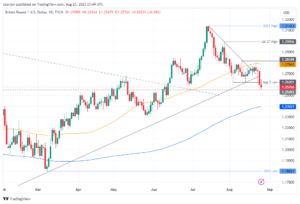
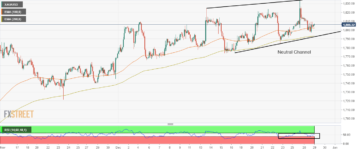


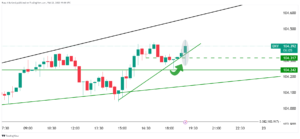
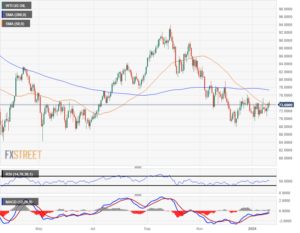


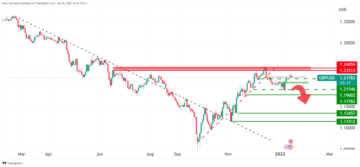
![Emini S&P faces resistance at 4200/4210 amidst sideways trend [Video]](https://platoaistream.com/wp-content/uploads/2023/04/emini-sp-faces-resistance-at-4200-4210-amidst-sideways-trend-video-300x200.jpg)
